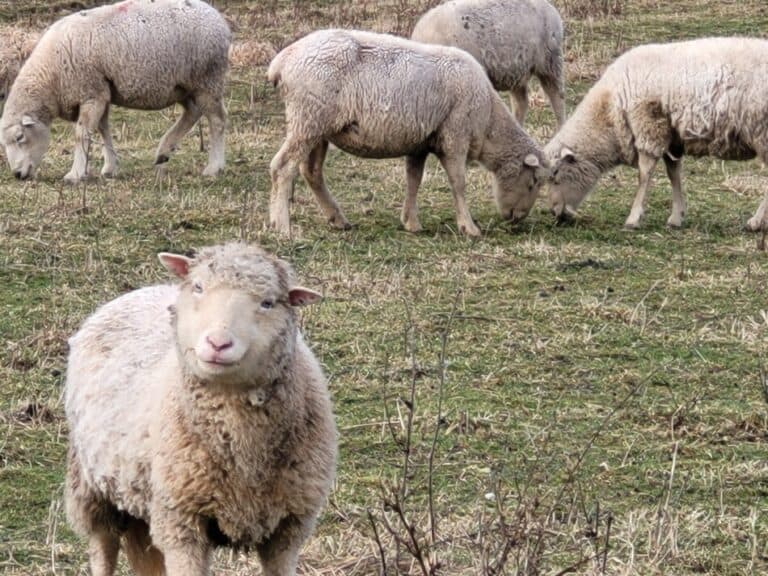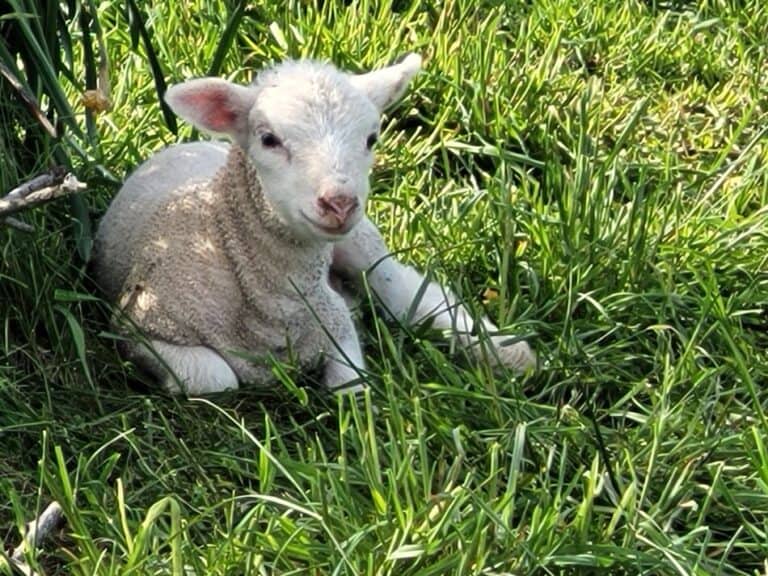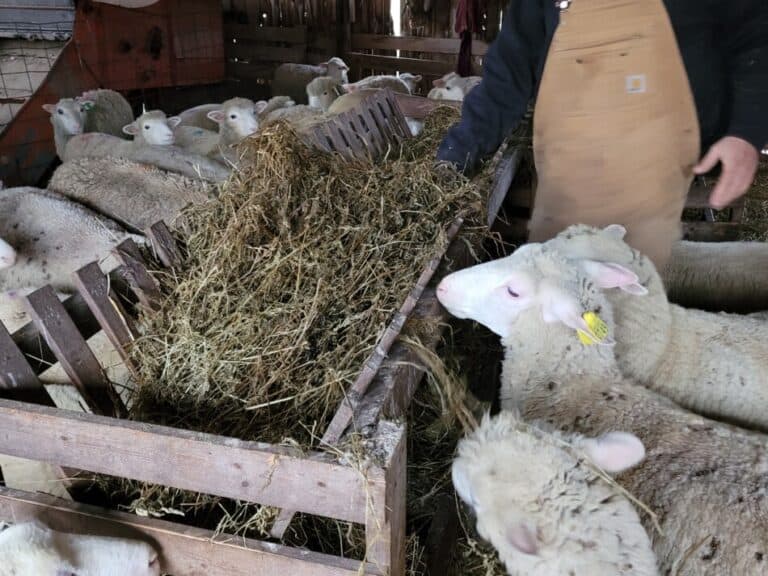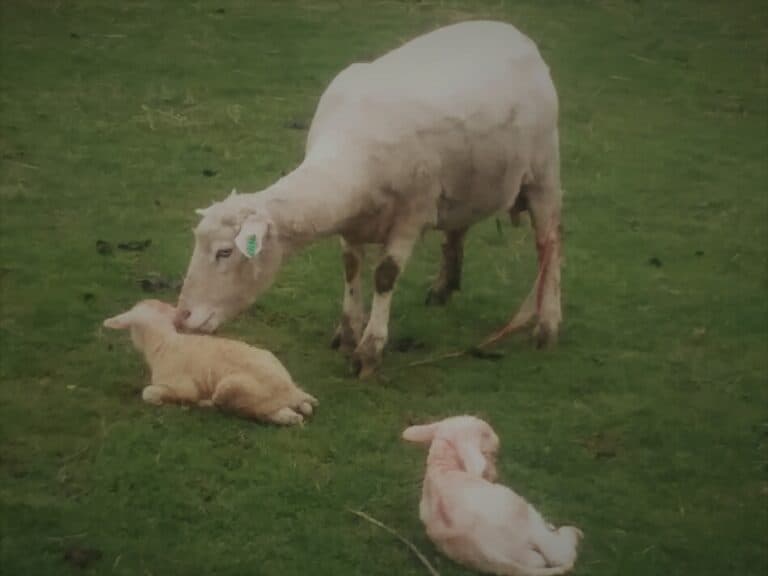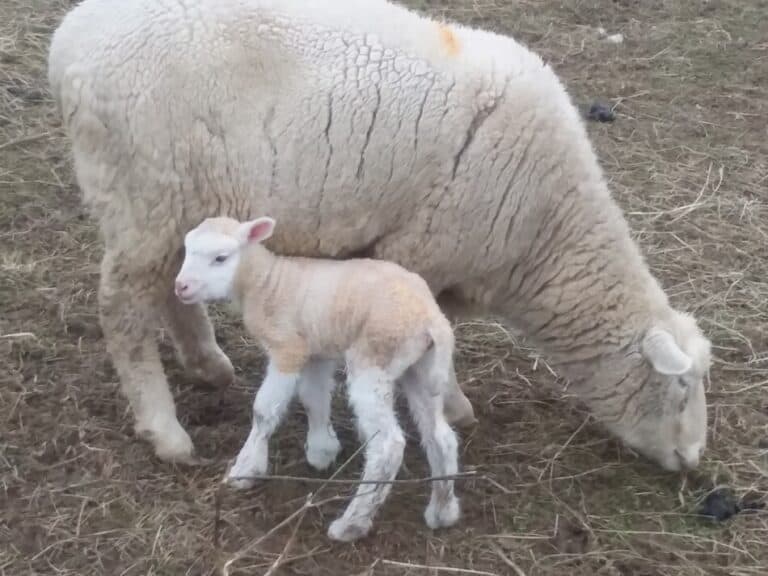How Much Does A Ewe Cost?
When you are thinking about getting into raising sheep, one of the first things you’ll want to know is the cost of buying your breeding stock.
What does it cost to buy ewes and what are the factors that affect the price you’ll pay for them?
A ewe will cost between $300-600, with bred ewes, ewes of more popular breeds and ewes in high demand regions on the higher end of the range and open (not bred) ewes, ewes of less popular breeds or ewes in lower demand regions on the lower end of the price range.

First off, you should know that there are many factors that will influence ewe price in your area and it’s likely that the ewes you look at will have a combination of these pricing factors.
An easy way to think of this is if you want a certain characteristic, chances are so do other folks, which makes prices go higher for any ewe that meets this criteria.
| If the ewe is: | Price will be: |
| Due to lamb soon | higher |
| In high demand (mainly breed or type) | higher |
| 2-4 years old | highest |
| bred | higher |
| open (not bred) | slightly lower |
| a ewe lamb (no track record of performance) | lower |
| aged (6 years and over) | lower |
How Much Do Sheep Cost? will give you the scoop on the cost to buy your flock, including rams and gives more details about factors that influence price of sheep in your area.
If you want to look into rams specifically, read my article How Much Does A Ram Cost?
Cost to buy an average ewe is $300-600
A reasonable average cost to buy a ewe is $300-600, which should get you a 2-4 year old ewe in good body condition that is proven, meaning she has already raised a set of lambs.
The cost you will pay for ewes will vary with things like:
- how well sheep are selling overall
- demand for the breed you choose
- age of ewe
- how close the ewes are to making you money
- feed prices in your area
Price for ewes is variable
Price per ewe changes, depending upon where you live. To know what’s likely, you’ll have to do some research to find going price for your region by looking at sale results and online ads.
I have seen articles that list the price of ewes at $160 each. I’m sure that in some other part of the country ewes are this cheap, but definitely not here, at least not for anything worth having.
If you live in a part of the country where good sheep are low cost, consider yourself lucky! For the rest of us, plan to spend a bit more to get high quality ewes.
You should also be aware that if you want registered stock, rare breeds or any other very specific genetics, you could easily pay more per ewe. This price range is for fairly common, productive ewes.
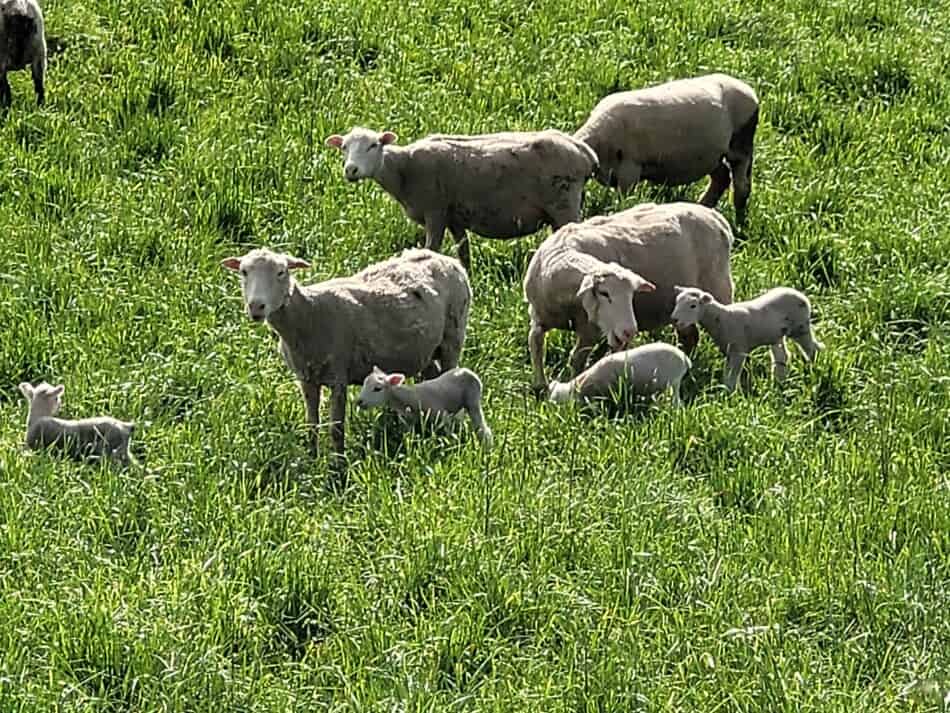
Ewes can be purchased at different reproductive stages
Ewes can be purchased at different reproductive stages, how close the ewe is to making the new buyer money will change the price of the ewe somewhat.
Here are the different reproductive stages of a ewe and what that is likely to do to the price you will pay.
For the most part, the sooner you will get results and the more of a sure thing it is that you’ll get those results the higher a price you’ll pay for the ewes based on reproductive stage.
Bred ewes are due to lamb
A bred ewe is a ewe that is going to lamb in a known time period. This is a popular way to get into sheep, since it gets the new producer lambs the first year without having to also purchase a ram.
Pros to buying bred ewes:
- the ewe is already bred, so you do not have to worry about a ram for this year
- all ewes that you buy will produce for you this year, no freeloaders
- the ewes will lamb in one group
Cons to buying bred ewes:
- more expensive than open (not bred) ewes
- you do not get to pick lambing time
- you do not get to pick ram used
Bred ewes are more expensive than open ewes for a simple reason, the bred ewe is more of a sure thing and is closer to making you, the buyer, money. This makes her worth more.
The other factor that will raise the value of a bred ewe is if she is proven, this means that she has successfully raised lambs before, which means she is more likely to be productive for you, as well.
First time moms are not as reliable as ewes that know what’s going on and have already been successful. This is why you pay more for a ewe that knows what she is doing.
The lambing date will not be specific
Since most sheep are pasture or pen bred, you will be given a range of dates for when she is likely to lamb, but not a specific date.
For example, you may hear something like the flock is due to start lambing in the beginning of May or that the ram was put in December 1st.
Both of these lambing windows are the same, just stated differently. You would expect the the first lambs to be born in late April with most of the ewes lambing in May.
Not all farms sell bred ewes
Bred ewes may be harder to find than open ewes, simply due to the fact that the shepherd has already put in more time and effort into them and is close to getting income back.
Some farms will sell bred ewes, some farms will not. For instance, we do not sell bred ewes, once the rams go into the flock for breeding season, we plan to keep all of the ewes that are bred.
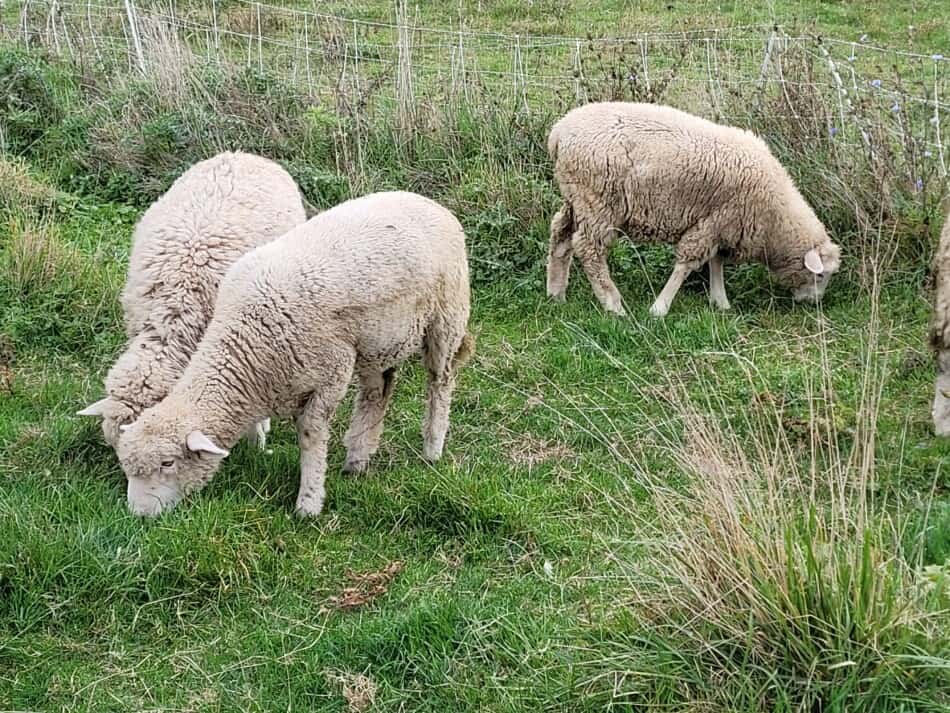
Open ewes are not bred
An open ewe is ewe that is not pregnant, but is expected to be used in the breeding flock this year.
The main reasons for a breeding stock ewe to be open (not bred) is that she just weaned lambs or the shepherd is waiting for the appropriate time of the year to turn in the rams.
All flocks have some time in the year when the ewes are open, for us it is about half of the year, from lambing time in May until breeding in December.
An open ewe that is of breeding quality is what the bred ewes were before the rams were turned in. She is not a cull!
Pros of buying open ewes:
- you determine lambing time
- you choose ram used
- ewes have longer time to adjust to you and your farm
Cons of buying open ewes:
- more time until lambing
- more cost until lambing
- you deal with the ram
- may get the occasional freeloader
I would guess that open ewes are going to be easier to find than bred ewes, here’s why: there has been less time and effort put into these ewes for this year, so the shepherd is more likely to sell them.
Cull ewes are a poor choice
Cull ewes are ewes that are being sold out of the flock due to lack of productivity. This could be poor performance as a mom, not breeding or just getting too old to take good care of herself.
Occasionally you will see folks who buy cull ewes since they are cheap and try to use them as a breeding flock. Usually this is a bad idea. A cull ewe is a cull for a reason.
Chances are she will continue to do poorly at your farm, too. Of course, it is your money and your decision as to how you start your flock, but generally speaking, culls are bad news.
The part people are trying to get around is the cost or lack of availability of high quality sheep, but the catch with culls is that they are not worth keeping!
Low quality stock is costly to keep, since they tend to be much more inefficient users of feed than good stock. Feed is one of your highest cost items with livestock each year.
Why are you starting with ewes that will cost you more to keep and are a maybe (at best) on actually producing anything?
Please do not make this mistake. Start your flock with high quality ewes.
Lamb And Sheep Inventory from the National Agricultural Statistical Service has average sheep prices for 2012. While that was more than 10 years ago, it gives you a good idea of what U.S. sheep prices have done lately, nationwide.
